The Ministry of Defence has confirmed that the Brimstone 3 missile programme is progressing through its Demonstration and Manufacture phase, with major integration milestones expected in 2025 and 2026, according to a written response published on 30 April 2025.
The missile is set to be integrated onto both the RAF’s Protector RG Mk1 drone and Typhoon fighter aircraft, with a first key firing test expected this summer.
Also, relatively recently, according to the latest Infrastructure and Projects Authority (IPA) report, “the Senior Responsible Owner’s Delivery Confidence Assessment rating at 23/24-Q4 increased from Red to Amber.” This change was endorsed by a formal IPA review in February 2024. The assessment also flagged ongoing challenges with resourcing skilled personnel across delivery teams and industry, but highlighted that officials are considering “opportunities to spiral capability developments to ensure capability is delivered at the earliest opportunity.”
In a written response to a parliamentary question from James Cartlidge MP, Minister for Defence Procurement Maria Eagle confirmed: “Brimstone 3 remains in the Demonstration and Manufacture phase.” She added: “The first safe separation firing from the Typhoon aircraft is expected to occur in summer 2025.”
Eagle also stated: “Brimstone 3 is scheduled to be fielded on Protector in Quarter four 2025 and Typhoon in Quarter four 2026.”
Brimstone 3 forms part of the Brimstone Capability Sustainment Programme, designed to maintain and expand the UK’s precision strike options. It incorporates advanced seeker technology and propulsion improvements, building on previous Brimstone variants, with additional upgrades possible in future, including against air targets.
While challenges remain, the move from Red to Amber indicates that the project is regaining momentum as it prepares for major trials and operational integration.



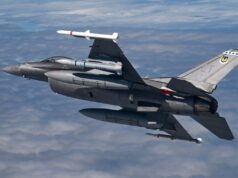

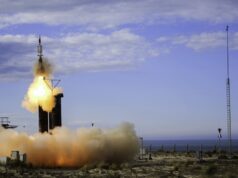
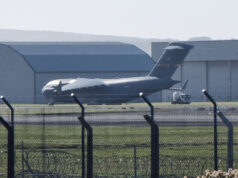

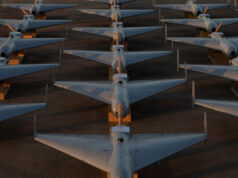
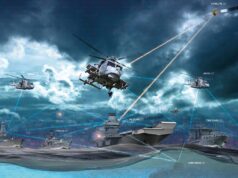


I wonder how this compares to JAGM.
Iirc the reason JAGM was selected for the new Apaches was range, which seems strange if an extended range Brimstone was planned anyway.
bars 🎶
Apache was as close to MOTS as possible.
Army actually wanted a procurement that delivered serviceable kit and didn’t just spend most of the budget to cancel.
JAGM was selected due to cost. It would have cost hundreds of millions to put Brimestone on Apache for little benefit.
The calculation may be different now given the Orange One.
And from what I remember Brimstone’s major advantage (if one ignores its traditional targeting flexibility over Hellfire) is from fast jets. Certainly was the case being able to be launched at Supersonic speeds.
Actually Jim working in the industry for over forty years. It wouldn’t have ‘cost’ hundreds of millions to integrate Brimstone. The price was hundreds millions.
The US blocks British weapons integration onto their platforms by commercial means. UK should have made A/C contract contingent on and including Brimstone integration. Huge error.
The US position is understandable once a weapon is integrated other nations could buy it too introducing competition with US domestic supply
Just did my research: JAGM was competing with Brimstone 3a anyway.
My bad.
The reason JAGM was chosen and developed was Brimstone is not an American weapon. Congressmen lobbied for Brimstone as it worked was no risk and available. Instead the US launched its own product development. The US are ultimately parochial, those that believe differently have never done business there. They ask for presentations, Chief engineers visits and try to extract maximum data, they string you along with half promises of large manufacturing volumes licenses etc then go and develop their own version – it was ever thus.
I was recently speaking to an ex Captain of Ark Royal; he opined that “The mistake people make is in thinking that because the Americans are allies they also think they are our friends”
Be under no illusion American seeks total commercial & political hegemony.
Apache is largely obsolescent- The US has already stated this and is in the process of retiring the D variant. Given the Ukrainian experience, the day of the attack helicopters is done!
How would Apache stand up to a simple threat like a drone with a claymore mine?
The UK Army continues to live in the past spending £ Billions of £’s on gold plated obsolete systems like Ajax & Apache. So, a forward recce A vehicle with no drone or APS protection which won’t reach FOC until the end of the decade (and with numerous faults) & a battlefield helicopter whose manufacturing country admits it’s obsolete! That’s £10,000,000,000 wasted with US suppliers on just two projects.
Mind you if you look at ex senior officers they got some plum jobs with the contractors! Could these facts possibly be connected?
https://www.youtube.com/watch?v=qnoKpXvj41A&t=141s&pp=ygUQcGVydW4gaGVsaWNvcHRlcg%3D%3D
I’m not sure if the link I’ve posted above works, given the site issues, but if not, try searching ‘Perun helicopter’ into your Youtube feed.
It’s a little long, but he does an excellent job of explaining the debate around attack helicopters.
Thanks I will have a look 👍
It didn’t work 🙁
Try searching ‘Perun helicopter’ into YT, he has a great video.
drones are a threat and so on that basis no big military kit could operate, and this maybe the case. would imagine if there’s drone threat, allied forces would hopefully using better than good electronic counter measures
🤣
Unfortunately there is general consensus that a particular system is obsolete because it is failing in certain scenarios. The problem is these scenarios are neither static nor worldwide. Ask any anybody & they will tell you that bayonets are obsolete & have been for 75 years. Yet they were used in the Falklands war & are standard issue in most militaries. More than a few didn’t get the obsolete memo.
Not every potential enemy has the ability (where they have it at all), to field all these abilities across the entire battlefield. In the main, they tend to be concentrated in relatively small areas. Anti artillery radar exists. Many militaries have this ability. They just forgot to scale it across thousands of kilometres of front line. Small matter of anti radar missiles just to make it interesting. Translate this to somewhere like the Western Pacific. Tens of thousands of kilometres with ten of thousands of islands with overall populations in the hundreds of millions. Or look at Pakistan & India. Currently on a knife edge. Their land border is over 3,00km. Both have nukes. Both have quite a lot of modern equipment (& even more not so modern). India has a much bigger population & army, though it has an even bigger frontier with not so friendly China (who also has nukes).
The world is not a simple one size fits all place. Even in Ukraine, the whole shoot & scoot artillery idea has come into question. Why – for one the number of anti artillery radars possessed by Russia is constrained & constantly targeted – for two, drones are much more likely to spot movement than a static gun. So is it better to shoot & scoot or shoot & not scoot? The answer is it depends.
Spot on.
Well put DJ, I agree! the key question is as AI enabled autonomous weapons and drone technology advance at a ferocious pace are we right to pour £ billions into attack helicopters (which had their golden age in the gulf) Ajax which will obsolete before it reaches FOC ? Etc. Do we get best bang for buck? Not easy questions; whilst we need a balanced force covering multiple eventualities mass drone deployment covers many of these challenges also more emphasis on Deep fires. In hindsight more emphasis should have been placed on Taranis and like programs – As usual while we fanny around with the treasury knowing the cost of everything and arguably the value of nothing – The Chinese have looked at all the drone programs in the US & Europe and forged ahead with their own versions.
Should we have to fight the next conflict I wouldn’t want our forces put in the position of the Brave Polish cavalry in WW2 !
Frankly the 13 protector (Reaper) drones ordered are; apart from being proven very vulnerable to not even peer forces like the Houthies. Massively expensive and totally inadequate. We need drones in all disciplines in mass deployment numbers along with AI enabled weapons in mass numbers at low cost. The battlefield is changing and evolving we must to if we are to survive. We also need a Defence industrial plan and strategy rather than buy everything from US, German, French companies and don’t bother with anymore R&D!
I think helicopter gun ships are still relevant but only under the cover of darkness and from attacks at distance. In my opinion more heavily armed Wildcats would make a sounder investment.
Attack helicopter dominance died in Libya. Where we forgot or rather ignored the need for actual ground attack aircraft capability.
But it is coming back at least for Russia while we try and work thing it after creating our own dead end instead of buying off the shelf at half the cost and insisting an Italian company built it here.
We need to start shooting staff officers again
I’m not sure that reasoning stands up! It is a fact that during the first year and half of the Ukraine War, Russian attack helicopters were getting knocked out of the sky in droves, particularly by MANPADS. But then the same helicopters either had next to no defensive aids or that it was old and rather obsolete. Mind you there is next to no defence when facing RBS70 or Starstreak/Martlet, except using nap of the earth flying to break the line of sight tracking. An Apache is a step change in defensive aids capabilities over their Russian counterparts.
Russia did learn through evolution more than anything else, to use their attack helicopters from 10km plus to launch ATGMs. As this was outside the envelop of both MANPADS and in particular Starstreak/Martlet (which have a range advantage over most MANPADS). The number of Russian attack helicopter losses have dropped dramatically. Whilst Ukraine is looking at how to bridge the gap between MANPADS and short range air defences (SHORAD). Which is where I think we may see more use of ASRAAM, due to its longer surface launched range over other missiles such as AIM-9X.
The other reason for keeping Apache, when facing a peer enemy. Is through the use of drones controlled by the Apache, allowing the helicopter to stand back. Where the drones then take all the risk.
Hi Davey, The intent of my comments is attack helicopters are largely obsolete not totally. Like the US empire; attack helicopters have had their ‘golden period’.
Like it or not AI enabled unmanned weapons are the future. DEW (Directed Energy Weapons) will also play a part.
Autonomous weapon and drone technology is developing at a ferocious pace (as technology does in wartime) Investing £ Billions in gold plated last generation systems to me is wrong.
For examples recent orders for Apache or Reaper/Protector drones £195M for 13 drones gives us a system that has already proven be vulnerable and no mass. All indicators are that drones of all types surveillance, Recce, ew, attack etc need mass deployment and must be Attritable – unless of course we only plan on a conflict lasting a couple of days!
Pretty sure they are retiring the D version… they are keeping and still buying the E which is also what we now operate.
Also, just because there is more / new risk, doesnt mean they are not useful and potentially essential in the correct circumstances and when used intelligently. Also, while threat changes, new ways to deal With it also get developed.
Drones are not magic and cannot do everything. They are changing the world and we need them but with the correct high low mix
Apart from their inherent attributes one of the reasons to continue to deploy attack helicopters is to present the enemy with a range of different threats. With the continuing advances in electronic and other defence systems it seems likely they have a fair life ahead.
Not forgetting that many if not most helicopters never face an actual threat during their service lives.